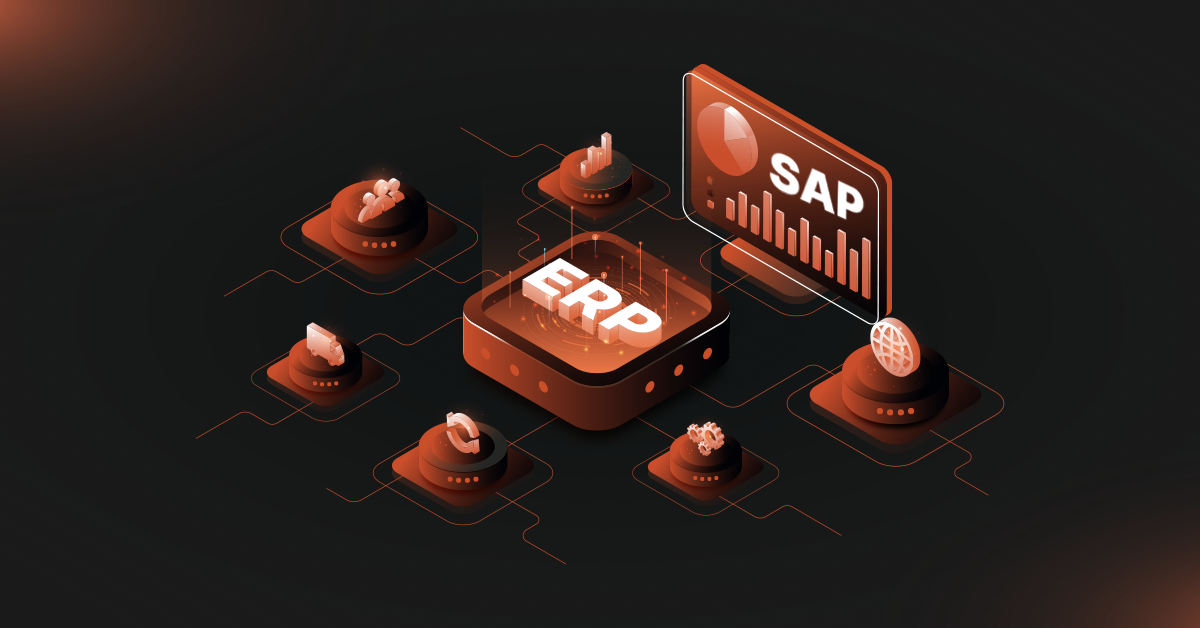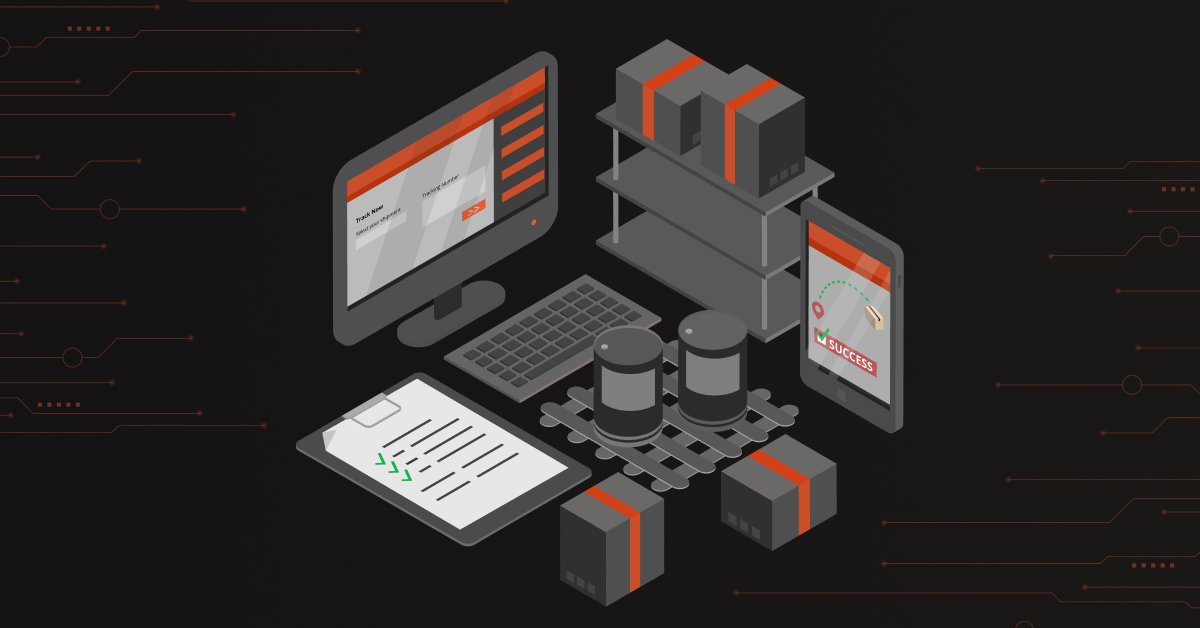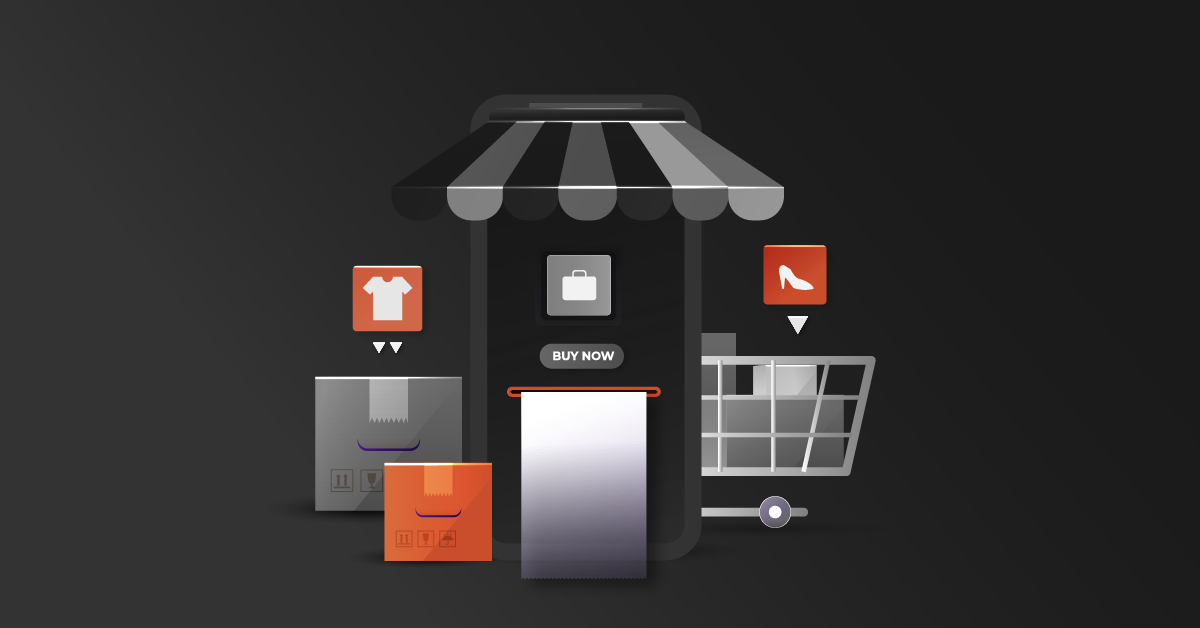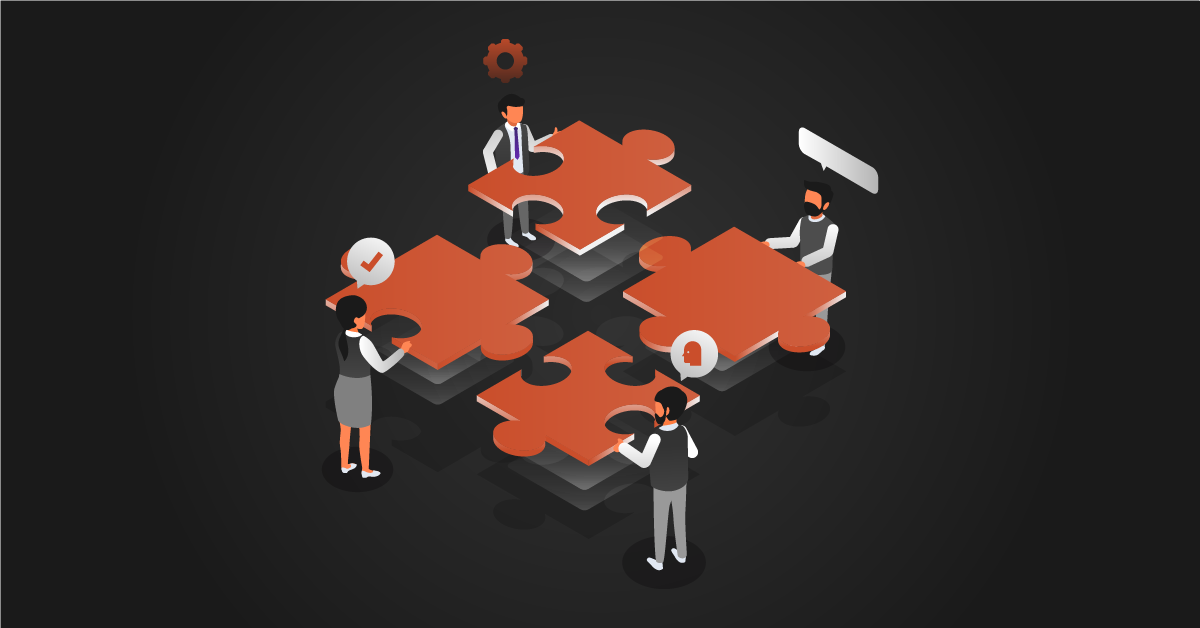SAP ERP is a robust software suite developed by SAP SE, a German multinational corporation. It empowers organizations to efficiently manage and optimize their fundamental business operations and processes.
SAP ERP integration refers to the crucial process of linking SAP ERP software with various internal systems, applications, and technologies. This integration facilitates smooth data exchange, real-time communication, and the enhancement of overall business processes. Let’s understand this further in detail.
Contents
What is the SAP System?
SAP is a comprehensive suite of integrated software applications and solutions developed by SAP SE; a global software company headquartered in Germany. SAP stands for “Systems, Applications, and Products in Data Processing.”
These systems are designed to help organizations manage and streamline their business processes across various departments and functions.
SAP offers a wide range of products within the SAP ecosystem to address different aspects of business operations. Some of the core products and categories are:
1. SAP ERP (Enterprise Resource Planning)
This is the foundation of the SAP system. SAP ERP is designed for medium to large enterprises that require a comprehensive and highly customizable ERP solution. It caters to a wide range of industries and business processes.
SAP ERP includes finance, human resources, procurement, supply chain management, production, and more modules. It provides a centralized platform for managing and integrating core business processes.
2. SAP Business One
SAP Business One is designed primarily for small to medium-sized enterprises (SMEs) and subsidiaries of larger organizations. It’s ideal for businesses that require an integrated and affordable ERP solution.
The software consists of different modules that address specific business functions. These modules include Financial Accounting, Sales and Customer Management, Purchasing and Inventory Control, Business Intelligence, and more. Also learn about SAP Business One integration with Salesforce
3. SAPS/4HANA
SAP S/4HANA is SAP’s next-generation ERP suite. It is built on the SAP HANA in-memory database platform and offers enhanced features for real-time analytics and business process simplification.
It is designed for large enterprises and organizations that require a modern, real-time, and highly integrated ERP system. It’s often seen as an upgrade path for existing SAP ERP users.
SAP S/4HANA includes modules like S/4HANA Finance, S/4HANA Supply Chain, and S/4HANA Human Resources.
Related reads: ERP Integration Challenges Explained [+10 Solutions]
Why is SAP ERP Integration Important?
SAP ERP integration holds specific importance due to its unique capabilities and features that set it apart from general integrations. Here they are:
Comprehensive Process Integration
SAP ERP integration goes beyond basic data exchange. It enables the integration of complex and highly structured business processes, such as financial accounting, procurement, and supply chain management. This level of process integration is crucial for organizations using SAP ERP to ensure that their entire business ecosystem operates harmoniously.
Real-Time Data Integration
SAP ERP integration provides real-time data synchronization. This means that information is updated instantly across integrated systems, allowing for timely decision-making and reducing the risk of outdated or inconsistent data.
Improved Customer Experience
With integrated systems, customer-facing processes like order processing and customer service become more efficient. This can lead to improved customer satisfaction and loyalty.
End-to-End Visibility
Integration with SAP ERP offers end-to-end visibility into an organization’s operations. This level of transparency is critical for tracking processes across departments, analyzing performance, and identifying areas for improvement.
Advanced Analytics
Integration with SAP ERP facilitates advanced analytics and reporting capabilities. Organizations can leverage SAP’s extensive reporting tools and business intelligence features to gain deeper insights into their operations, helping them make data-driven decisions.
Industry-Specific Solutions
SAP offers industry-specific ERP solutions and templates, allowing organizations to integrate industry best practices seamlessly. This specialized functionality can be challenging to replicate with standard integrations.
Global Reach and Compliance
SAP ERP integration caters to multinational organizations by offering support for multiple languages, currencies, and legal requirements. It helps ensure global compliance with regional regulations and tax laws.
Customization and Flexibility
SAP ERP systems are highly customizable to align with unique business processes and industry-specific needs. Integration allows organizations to maintain this customization while connecting with external systems.
Types of SAP ERP Integration
There are mainly three types of SAP ERP integration. They are as follows.
SAP ERP to SAP ERP Integration
SAP ERP to SAP ERP integration, also known as system-to-system integration, involves connecting two or more SAP ERP software within the same organization. This software could be running on different servers, in different geographical locations, or serving different business units. When companies merge or if different parts of a big company use separate SAP ERP systems, this helps them work together smoothly.
SAP ERP to Third-party Applications
Here, SAP ERP connects with software from other companies, not just SAP. It’s like making SAP ERP friends with different types of software. When you want SAP ERP to work with things like online shopping systems or customer service tools from other companies, this integration helps them work together.
Cloud-based Integration with SAP ERP
Cloud-based integration involves connecting SAP ERP to cloud-based applications, whether they are Software as a Service (SaaS), Platform as a Service (PaaS), or Infrastructure as a Service (IaaS) offerings. When you use online tools for things like managing employee information or tracking expenses, this type of integration gives the ability to let those tools work smoothly with your SAP ERP system.
Related reads: ERP In Supply Chain Management: A Distributor’s Guide
Methods of SAP ERP Integration
Here are the methods to integrate with SAP ERP:
Data Integration
Data integration is like making sure that all the different parts of your business can talk to each other and share information easily. It’s about keeping your data organized and consistent.
For example: When your sales and finance teams use SAP ERP, data integration ensures that sales and financial data match up perfectly without any errors.
Application Integration
Application integration is about getting all your business’s software and computer programs to work together smoothly.
For Example: When your SAP ERP system connects with your online store software, it means that when a customer places an order on your website, that information automatically shows up in your ERP system.
Business Process Integration
Business process integration is all about connecting different tasks and processes in your business to avoid any disturbance. For Example: When SAP ERP works hand in hand with your supply chain management, it helps your business order and manage inventory without any bottlenecks.
Presentation Integration
Presentation integration is like making sure that all your reports and charts look the same and are easy to understand. It’s about presenting information consistently.
Example: When you use SAP ERP for tracking sales and finances, presentation integration ensures that the graphs and reports you create have a uniform and clear format.
Each of these integration methods plays a crucial role in creating a well-connected and efficient IT ecosystem within an organization, allowing SAP ERP to work seamlessly with other systems and technologies to support business objectives.
SAP ERP Use Cases
Some common use cases for SAP ERP in various areas of business:
1. Accounting and Finance
SAP ERP is widely used for accounting and finance tasks. It helps organizations manage their financial transactions, track expenses, and create financial reports. With SAP, businesses can streamline their financial processes, ensure compliance with regulations, and gain real-time insights into their financial health.
2. Supply Chain Management
SAP plays a crucial role in optimizing supply chain management. It enables organizations to monitor and manage the flow of goods, information, and finances across the entire supply chain. With SAP, businesses can improve inventory management, demand forecasting, and supplier collaboration, ultimately reducing costs and enhancing efficiency.
3. Human Resource Management
SAP provides robust solutions for human resource management (HRM). It helps HR departments manage employee data, payroll, benefits, recruitment, and performance evaluations. SAP HRM streamlines HR processes, enhances employee self-service, and ensures compliance with labor laws and regulations.
4. Material Management
Material management with SAP involves efficient handling of materials, from procurement to inventory control. It allows businesses to optimize their procurement processes, manages inventory levels, and track the movement of materials in real time. This ensures that the right materials are available when needed, reducing waste and costs.
5. Sales and Distribution
SAP supports sales and distribution processes by managing customer orders, pricing, and product availability. It helps sales teams track customer interactions, manage leads, and streamline sales order processing. This results in improved customer service, faster fulfillment of customer needs, and better sales performance.
SAP ERP is a versatile tool that can be tailored to meet the specific needs of various business functions. It empowers organizations with the growing need to operate more efficiently, make informed decisions, and stay competitive in their respective industries. Whether it’s managing finances, optimizing the supply chain, handling HR tasks, controlling materials, or enhancing sales and distribution, SAP offers comprehensive solutions to drive business success.
Related reads: ERP Data Integration With Other Systems
How to Integrate SAP ERP into your Business?
Integrating SAP ERP into your business can streamline operations and boost efficiency. Here are the simple steps to go about it:
1. Choose an Integration Platform
To start, consider using an Integration Platform as a Service (iPaaS) like DCKAP Integrator. This platform acts as a bridge, connecting your SAP Business One ERP system with other essential applications in your business.
2. Identify Key Integrations
Determine which areas of your business need integration with SAP Business One. It could be eCommerce, Customer Relationship Management (CRM), Supply Chain Management (SCM), or even third-party applications.
3. Use Connectors
Integration platforms like DCKAP Integrator offer connectors designed specifically for SAP Business One. These connectors facilitate the exchange of crucial information between SAP Business One and other systems. They make sure data flows smoothly.
4. Explore Customization
If your integration needs are unique or complex, the platform should provide the flexibility to customize. This means tailoring the integration to match your specific business requirements and enhance the overall performance.
5. Ensure Security
Data security is paramount. Look for an integration platform that complies with data protection regulations like GDPR. This ensures your data remains safe and confidential through encrypted transactions and SSL certifications.
6. User-Friendly Interface
A good integration platform like DCKAP integrator offers a user-friendly interface. Features like drag-and-drop functionality and minimal coding requirements make the integration process smoother and more accessible.
Integrating SAP ERP into your business involves selecting the right integration platform. Book a free demo session with the DCKAP integrator and see how it enhances your business operations.
FAQS
What are SAP applications?
SAP applications are software solutions developed by SAP SE for various business needs. They encompass a wide range of products, including ERP (Enterprise Resource Planning), CRM (Customer Relationship Management), BI (Business Intelligence), and more, each tailored to specific business functions.
What is the SAP Help Portal?
The SAP Help Portal is an online resource provided by SAP that offers documentation, guides, and support materials for SAP products and solutions. It serves as a knowledge hub for SAP users and administrators.
What are SAP ERP Integration challenges?
Integrating SAP ERP systems with other applications and systems can present challenges such as data mapping, system compatibility, data security, and ensuring real-time data synchronization. Overcoming these challenges is crucial for successful integration.
What are some new use cases for SAP ERP?
SAP ERP is continually evolving to meet changing business needs. New use cases may include real-time supply chain visibility, IoT (Internet of Things) integration, predictive maintenance, and advanced analytics for better decision-making.
What is a POS system?
A Point of Sale (POS) system is a hardware and software solution used by business users to complete sales transactions, including processing payments, recording sales, and managing inventory. It’s commonly used in retail and hospitality industries.
What is a Business Application Programming Interface (API)?
A Business Application Programming Interface (API) is a set of rules and protocols that allow different software applications to communicate and interact with each other. It enables data and functionality sharing between various business systems, promoting seamless integration.
What are SAP ERP integration tools?
SAP ERP integration tools are software solutions and technologies used to connect SAP ERP systems with other applications, systems, and data sources. These tools facilitate data flow and process synchronization.




